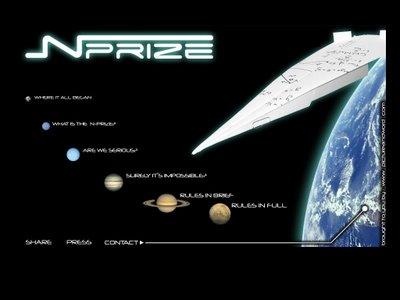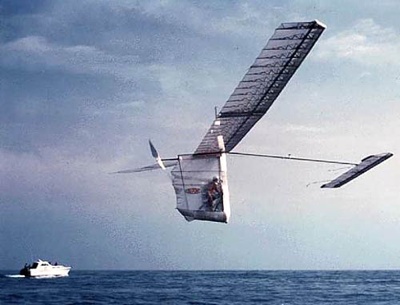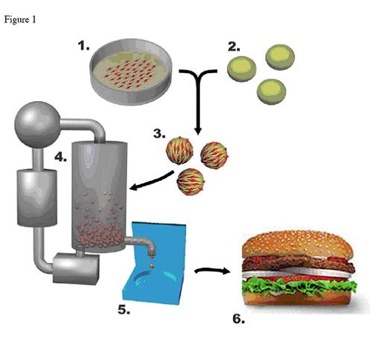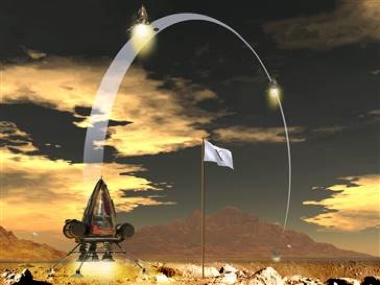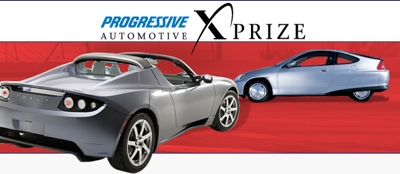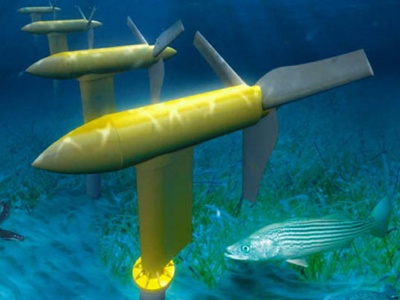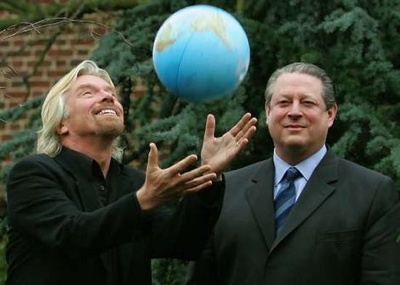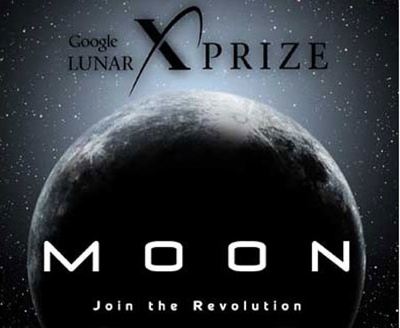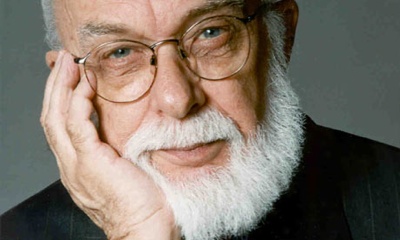 Our World
Our World  Our World
Our World  Movies and TV
Movies and TV The 10 Coolest Stars to Set Sail on The Love Boat
 History
History 10 Things You Didn’t Know About the American National Anthem
 Technology
Technology Top 10 Everyday Tech Buzzwords That Hide a Darker Past
 Humans
Humans 10 Everyday Human Behaviors That Are Actually Survival Instincts
 Animals
Animals 10 Animals That Humiliated and Harmed Historical Leaders
 History
History 10 Most Influential Protests in Modern History
 Creepy
Creepy 10 More Representations of Death from Myth, Legend, and Folktale
 Technology
Technology 10 Scientific Breakthroughs of 2025 That’ll Change Everything
 Our World
Our World 10 Ways Icelandic Culture Makes Other Countries Look Boring
 Our World
Our World 10 Ways Your Christmas Tree Is More Lit Than You Think
 Movies and TV
Movies and TV The 10 Coolest Stars to Set Sail on The Love Boat
 History
History 10 Things You Didn’t Know About the American National Anthem
Who's Behind Listverse?

Jamie Frater
Head Editor
Jamie founded Listverse due to an insatiable desire to share fascinating, obscure, and bizarre facts. He has been a guest speaker on numerous national radio and television stations and is a five time published author.
More About Us Technology
Technology Top 10 Everyday Tech Buzzwords That Hide a Darker Past
 Humans
Humans 10 Everyday Human Behaviors That Are Actually Survival Instincts
 Animals
Animals 10 Animals That Humiliated and Harmed Historical Leaders
 History
History 10 Most Influential Protests in Modern History
 Creepy
Creepy 10 More Representations of Death from Myth, Legend, and Folktale
 Technology
Technology 10 Scientific Breakthroughs of 2025 That’ll Change Everything
 Our World
Our World 10 Ways Icelandic Culture Makes Other Countries Look Boring
10 Fascinating Prize Challenges
The idea of a prize challenge to inspire inventors, scientists, adventurists and others has been around for quite some time. One of the most famous was in 1927 when Charles Lindbergh won the Orteig prize (named after a New York hotel owner Raymond Orteig) and received $25,000 for the first allied aviator to fly non-stop from New York City to Paris. All of the challenges I have compiled for this list are still waiting to be met along with over $90 million worth of prize money still up for grabs. So let’s get busy everyone!
Prize: $15,000
Challenge: Launch a satellite weighing between 9.99 and 19.99 grams into Earth orbit, and to track it for a minimum of nine orbits. But most importantly the launch budget must be within £999.99 (about $1500)
This is at the number 10 spot not because of the difficulty of the challenge but because of the rather cheap prize money. The N-Prize (N stands for Nanosatellite or Negligible Resources) was launched in 2008 by Cambridge biologist Paul H. Dear to stimulate innovation directed towards obtaining inexpensive access to space. In order to be eligible for the award, the winning team must complete the challenge before 19:19:09 (GMT) on 19 September 2011. The winning team will receive £9,999.99. (about $15,000)
Interesting Fact: Many believe the biggest challenge facing the participants of this challenge is once a satellite reaches space, it needs to decelerate and be nudged into orbit. This typically requires expensive guidance systems and multiple rocket stages. So far 18 competitors have signed up for N prize Challenge. To learn more about the N prize or you want to be the 19th competitor you can go here.
Prize: $95,000
Challenge: Fly an aircraft by human power 26 miles around two turning points in less than 1 hour.
The Kremer prizes were established in 1959 by industrialist Henry Kremer, and are given to pioneers of human-powered flight. The first two Kremer prizes were won by Dr. Paul MacCready. He won the first in 1977 when his Gossamer Condor piloted by Bryan Allen was the first human-powered aircraft to fly a figure eight around two markers one half mile apart. The second was won in 1979 when his Gossamer Albatross also piloted by Bryan Allen flew from England to France. For the marathon challenge the aircraft must start from rest and fly in a continuous flight for 26 miles in less than 60 minutes and must make a landing satisfactory to the observers. For more details and regulations for this prize challenge you can read about them here.
Interesting Fact: Another human powered flight prize still up for grabs is the Sikorsky Prize in honor of Igor Sikorsky who was highly influential in the development of helicopters. The prize challenge was established back in 1980 and will pay $20,000 to the first person who can stay aloft for 60 seconds in a human-powered helicopter and reach a height of ten feet. If you are more of a helicopter person rather than the fixed- wing type you can get your entry form here.
Prize: $1 Million
Challenge: Reliably and effectively extend the life of ALS mice by 25%.
Prize4Life is non-profit organization dedicated to accelerating the discovery of treatments and a cure for amyotrophic lateral sclerosis (ALS), also known as Lou Gehrig’s disease. Prize4Life has launched two major prizes of $1 million each that aim to find solutions to some of the most critical milestones on the way to developing treatments and a cure for ALS. The first prize challenge was for the discovery of a biomarker that can reduce the time and cost of ALS clinical trials. The latest challenge is for the discovery of a therapy that can extend life in the mouse model of ALS. Both prize competitions are open to all, and anyone with an interest is encouraged to compete.
Interesting Fact: To date Prize4Life has awarded $175,000 in smaller prizes for theoretical solutions and progress made thus far in the Biomarker Prize Challenge. To learn more about Prize 4 life you can go here.
Prize: $1 Million
Challenge: Produce an in vitro chicken-meat product that has a taste and texture indistinguishable from real chicken flesh to non-meat-eaters and meat-eaters alike.
Manufacture the approved product in large enough quantities to be sold commercially and successfully sell it at a competitive price in at least 10 states by June 30, 2012.
In vitro meat (also known as cultured meat) is the manufacturing of meat products through tissue-engineering technology. The idea is to produce animal meat without killing an animal. PETA is offering the $1 million prize and claims that cultured meat could also have financial, health, environmental advantages over traditional meat. Judging of taste and texture will be performed by a panel of 10 PETA judges who will sample the in vitro chicken prepared using a fried chicken recipe from VegCooking.com. The in vitro chicken must get a score of at least 80 when evaluated in order to win the prize. I guess it goes without saying that the judges must also declare: “tastes like chicken”.
Interesting Fact: Researchers started working with in vitro proteins in the late 1990s as a way to create food for astronauts on long space missions. Animal-free in vitro meat may also present a partial solution to world hunger. You can read the official contest rules here.
Prize: $1.5 Million
Challenge: Create an aircraft that can average at least 100 mph on a 200-mile flight while achieving greater than 200 passenger miles-per-gallon.
NASA is providing the prize money for this challenge and is aimed to bring about the development and convergence of new technologies and innovations that can improve the community acceptance, affordability and safety of future air vehicles. Other requirements include a short take off, quiet operation, and the ability to drive around on the ground. The aircraft will need to meet stringent safety requirements as well as reasonable speed and range. Competitors may not receive government funding for their entries in this challenge.
Interesting Fact: This challenge it is expected that electric, bio-fueled and hybrid-powered aircraft will compete. The competition will not be held until the summer of 2011, so that teams have time to develop and test their aircraft. You get more details on the rules and regulations for this competition here.
Prize: $1.65 Million
Challenge: Launch a vertical takeoff/vertical landing (VTVL) rocket that achieves the total delta-v needed for a vehicle to move between the surface of the Moon and its orbit.
The lunar Lander Challenge has been an annual competition since 2006. It is funded by NASA with sponsorship from the Northrop Grumman Corporation. There are two levels to this competition. The first Level requires a rocket to take off from a designated launch area and then climb to a low fixed altitude and fly for at least 90 seconds before landing on a different landing pad. Level two requires the rocket to fly for 180 seconds before landing on a simulated lunar surface constructed with craters and boulders. The flights for level one and two must then be repeated in reverse. Qualified teams are able to register for prize-winning attempts on a first-come, first-served basis with a small crew of judges and observers traveling to meet the team at a venue of their choosing. Teams may submit registration forms through September 15, 2009. So far 3 teams have registered.
Interesting Fact: In 2008 Armadillo Aerospace of Mesquite, Texas was awarded $350,000 for successfully completing Level 1. There remains an unclaimed award of $150,000 for second place. A $1 million First Place and a $500,000 second place prize remain to be claimed by the winners of Level 2. You can watch a video of the 2008 challenge here.
Prize: $10 Million
Challenge: Design and build production-capable, 100 MPG (miles per gallon energy equivalent) vehicles that people will want to buy and that meet market needs for price, size, safety and performance.
Within the Competition Division, there are two vehicle classes; Mainstream which are typical small, five-passenger, economy mixed-use vehicles and alternative which has fewer performance and design restrictions and provides an outlet for more innovation. The alternate class has 2 separate prizes of $2.5 million, one for side-by-side seating and one for tandem seating. All will have the same requirements for fuel economy and emissions. Teams are also required to submit a business plan which clearly demonstrates an ability to produce 10,000 vehicles per year.
Interesting Fact: On April 7 2009, the X PRIZE Foundation announced that 111 teams had registered by the February 2009 deadline. By July 8, 2009, the number of teams participating had fallen to 95. The next steps are design judging and then performance testing before the challenge prizes are awarded. You can see a list of the registered teams and pictures of some of the cool cars here.
Prize: $20 million
Challenge: Demonstrate in Scottish waters a commercially viable wave or tidal energy technology that achieves a minimum electrical output of 100GWh over a continuous 2 year period using only the power of the sea.
The Saltire prize is named after the cross of St. Andrew on the Scottish national flag and is an attempt to unlock Scotland’s vast marine energy. The prize is also meant to kick start Scotland’s marine renewable energy program and help meet their target of generating 50% of their electricity demand from renewable energy by 2020. The team that is judged to have the best overall technology after consideration of cost, environmental sustainability and safety will win the prize. Entries for the Saltire Prize will stay open until June 2013 with the winner chosen two years later.
Interesting Fact: The potential for renewable energy in Scotland is considerable. They have the potential to generate 25% of Europe’s wind energy, 25% of Europe’s tidal power and 10% of Europe’s wave power. You can watch a video about the Saltire prize here.
Prize: $25 Million
Challenge: The first person or organization to come up with a way of scrubbing greenhouse gases out of the Earth’s atmosphere to avoid global warming.
Some have estimated that around two hundred billion metric tons of carbon dioxide have accumulated in the atmosphere since the beginning of the industrial revolution. The Virgin Earth Challenge is intended to inspire inventors to find ways of bringing that back down again to avoid the dangerous levels of global warming and sea level rise predicted by some scientific organizations. The prize challenge was conceived and financed by Sir Richard Branson and Al Gore and will be awarded to the first plan that is capable of removing one billion metric tons of carbon dioxide from the atmosphere per year for 10 years. $5 million of the prize will be paid at the start of removal operations with the remaining $20 million paid after the successful completion of the plan at the end of the 10 year period. So if you are interested in saving the earth from the latest doomsday prophesy and winning $25 million at the same time you can get the entry form and the Virgin Earth Challenge guidelines here.
Interesting Fact: One approach that has been put forth attempts to catch carbon dioxide with artificial trees. The plastic trees are coated with a carbon-catching agent, allowing the carbon to be safely captured and sequestered.
Prize: $30 Million
Challenge: The only thing you have to do here is safely land a robot on the surface of the Moon, move it 500 meters over the lunar surface and send images and data back to the Earth.
The goal of this prize challenge is to inspire a new generation of private investment in hopes of developing more cost-effective technologies and materials. The first team to land on the Moon and complete the mission objectives will be awarded $20 million. The second team to do so will be awarded $5 million. Another $5 million will be awarded in bonus prizes. The competition is organized by the X PRIZE Foundation and sponsored by Google. After December 31, 2012 the first prize will drop to $15 million. The final deadline for winning this prize is December 31, 2014.
Interesting Fact: You can pick up an extra $5 million bonus prize for traveling long distances (greater than 5,000 meters), capturing images of manmade objects on the moon, detecting ice on one of the Moon’s craters, discovering the remains of Apollo program hardware, or surviving a lunar night. Before you organize your Lunar X prize team you should probably read more about the rules and competition guidelines here.
Prize: $1 Million
Challenge: Anyone who can show under proper observing conditions, evidence of any paranormal, supernatural, or occult power.
This prize is offered by the James Randi Educational Foundation (JREF). Randi states that both parties must agree in advance as to what conditions of the test constitute a “success” and what constitutes a “failure To claim, one must agree to the testing a protocol and must show in a preliminary test before a foundation representative that they are likely to succeed, and finally make a demonstration in a formal test in front of independent witnesses. To date, over 1,000 applications have been filed but no one has passed the preliminary test.
Interesting Fact: One of the excuses given by a famous psychic to avoid the challenge said “Randi has powerful anti-psychic powers, and his mere presence is sufficient to damp my own powers.” If you think you have the supernatural or paranormal ability to win the 1 million dollars you can start here with the official JREF application form.
